A lovable giant, the great Dane is known for having a heart of gold, which can sometimes be masked by his massive size. These are fun dogs to own, offering a good combination of overall calm and joviality. Of course, owning such a large dog should not be taken lightly. These dogs can be quite the handful for families unprepared for their unique needs. Read on to learn more about the great Dane.
Description of the Great Dane
The great Dane, something of a misnomer, was bred as a hunter and protector. They have no known connection to Denmark, but were used to hunt wild boar in Germany.
Like all giant breeds, Danes are huge – but they’re not bulky like mastiffs or other giants. Smooth-coated and muscular, they can be quite handsome. Still, they are often leaking drool from their rather large snouts, which detracts from some of their nobility.
These dogs come in many colors, including black, sable, and white. Harlequin, a coat consisting of black and white patches, is also common.
Their alert ears and kind eyes give this breed a pleasing expression.
Life Expectancy and Size
The great Dane is one of the biggest breeds around. Males are noticeably larger, standing between 30 and 32 inches at the shoulder, and weighing up to 175 pounds. A male great Dane is likely to be bigger than his owner!
Female Danes are still a force to be reckoned with. They generally stand a couple inches shorter, and weigh between 110 and 140 pounds.
Unfortunately, as with many giant breeds, the great Dane does not have a long life expectancy. Most live between 7 and 10 years. The breed is susceptible to a variety of health issues that may shorten their lives.
Protective Ability
This breed was bred to protect. Perhaps the Dane does not first jump to mind as a guard dog. However, it can be very effective.
The Dane’s size is an intruder’s biggest deterrent. In terms of temperament, most of these dogs are happy-go-lucky. However, they may snap into protective mode when need be. It is hard to determine each dog’s unique temperament. Danes range from sensitive and loving, to extraverted, or even aggressive, depending on training, breeding, and personality.
Be sure to initiate obedience and socialization young, so that the Dane does not become aggressive, and is able to identify dangerous situations.
Training
Training the great Dane can be rewarding, but also frustrating if it is approached in an inappropriate manner.
Generally, the Dane is very social and has a strong desire to make people happy. This can make them easy to train for a consistent, understanding owner. It can feel as if training is only cementing this breed’s natural tendency to be an obedient companion.
However, some dogs can also be headstrong and bossy. The Dane requires an owner that is confident and able to follow through on commands. These dogs do not respond well to meanness or harsh words. They can be very sensitive, and overly assertive behavior can shut them down. It is best to stick with positive, rewards-based training regimens.
Young Danes can be boisterous to the point of destruction. Begin obedience classes early to make your dog more manageable in his “teenage” years. It also helps to begin training while this dog is still relatively small in size.
Energy Level
One advantage to the Dane is his relatively calm temperament. Alert and social, this breed is not known to be hyperactive. However, they need reasonable amounts of exercise, and opportunities to stretch their legs. This will help to keep both the Dane’s body and mind sound.
Young dogs tend to be higher in energy. Keeping them active can avoid destructive behaviors. It’s amazing how much damage a young Dane can cause racing around the house out of boredom!
What Living with a Great Dane is Like
Many people immensely enjoy living with these dogs. They are usually kind, and surprisingly gentle for their size. That doesn’t mean they can’t be goofballs as well!
The great Dane can, of course, be a challenge for people with limited space. They take up a lot of room in the house, yard, and vehicle. These dogs are not recommended for people that do not like being crushed by 150 pounds of love. Interestingly enough, many people find Danes to be good apartment-dwellers, if they are prepared to get out and exercise their dogs.
They are relatively easy to exercise, though it is important to achieve balance. Although they do not require as much exercise as many other breeds, they need the right mix to maintain their fitness and avoid joint problems. This can be troublesome to work out.
This breed is usually very good with kids. As a notoriously happy breed, they also tend to like dogs and other house pets. Begin socialization early to prevent any bossy or aggressive tendencies.
Danes are people-oriented, who do not like to be left alone for long periods of time. Additionally, their sensitive personalities mean that harsh words can leave them sad, or even depressed.
Care of the Great Dane
As long as the owner is willing to commit to the needs of such a huge dog, the great Dane can adapt well to many living situations. They thrive on personal interaction.
Environmental Needs
These dogs are very adaptable, and do well in most environments. In excessively high temperatures, they can overheat, so make sure to keep plenty of water available. Because of their large size, they do need access to adequate space, both inside and out.
Exercise Needs
In general, Danes are easygoing. They do not need too much exercise, but rather enough to keep them fit and avoid health problems.
In fact, too much running and playing can be hard on their joints. This can be the only tricky part. Danes should be eased into exercise. Especially when they’re young, their fast-growing bones are susceptible to damage and pain.
Walks can be a good form of exercise for this breed. They are gentle on the body and provide plenty of interaction with humans. Some Danes like sports like agility or obedience.
Shedding and Grooming
As a smooth-coated breed, the great Dane is relatively easy to care for.
Expect minimal shedding all year round, with a period or two of heavy hair loss. Loose hair and dirt can be removed weekly with a grooming glove or mitt. This will reduce excess hair around the house and give the Dane’s coat a nice sheen.
This breed does not need to be bathed often. In fact, too many baths can irritate their sensitive skin.
Ideal Home Environment
This breed is popular with families. The most important requirement for the great Dane is access to adequate space. Large family homes with big yards are preferable.
Danes get along well with children and other pets, as long as they are properly socialized. Otherwise, they may become pushy or bossy.
Although they may function as guard dogs, this breed also needs to be part of the family. They require human interaction for both health and happiness.
Health Concerns
This breed has a fair number of health problems, not uncommon for giant breeds.
Eye, heart, and hip problems are common. Responsible breeders will screen their dogs for potential issues. Exercising Danes responsibly can help them avoid some joint issues. Some of these dogs also have thyroid issues and cancer later in life.
Like many other large-chested dogs, this breed is susceptible to bloat. However, Danes are particularly high risk. The sudden-onset stomach disorder is actually the biggest killer of these dogs. Feed small meals, multiple times a day, and avoid exercise immediately after eating. Some people consider a preventative surgery that may lower the risk of fatality.
Behavior Problems
These dogs can be destructive when left alone. They prefer human company, and often become distressed when lonely. For this reason, they may not be a good choice for owners that work long hours away from home.
Young Danes can be high-energy. Coupled with over-sized bodies, this can lead to a lot of commotion. Make sure that they receive enough exercise to keep them sane, and enough obedience training to listen. Still, it is important to avoid over-exercising young dogs for fear of hurting them.

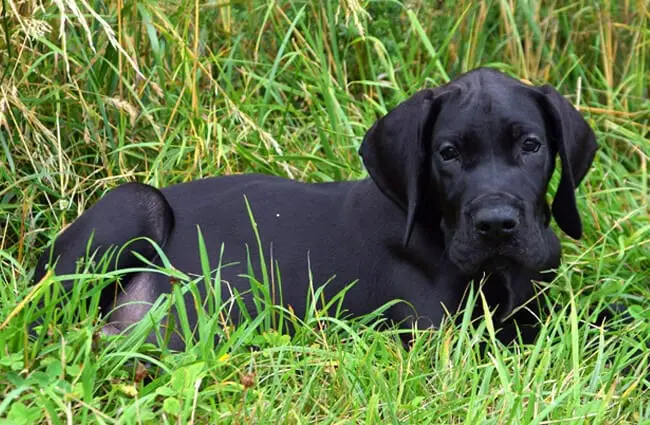
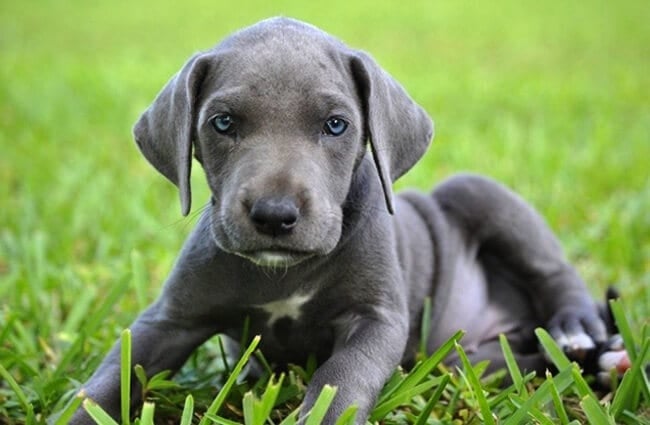
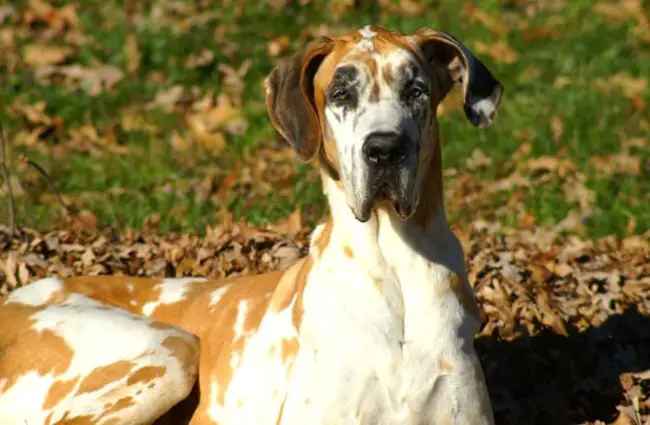
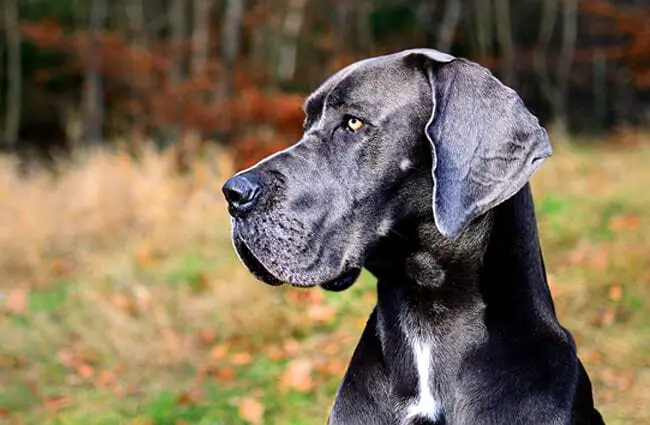

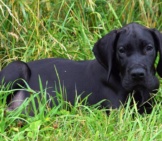
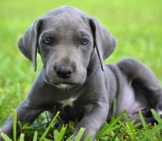

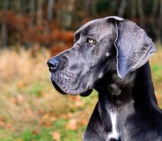














![Red Angus Closeup of a beautiful Red Angus cowPhoto by: U.S. Department of Agriculture [pubic domain]https://creativecommons.org/licenses/by/2.0/](https://animals.net/wp-content/uploads/2020/03/Red-Angus-4-100x75.jpg)

